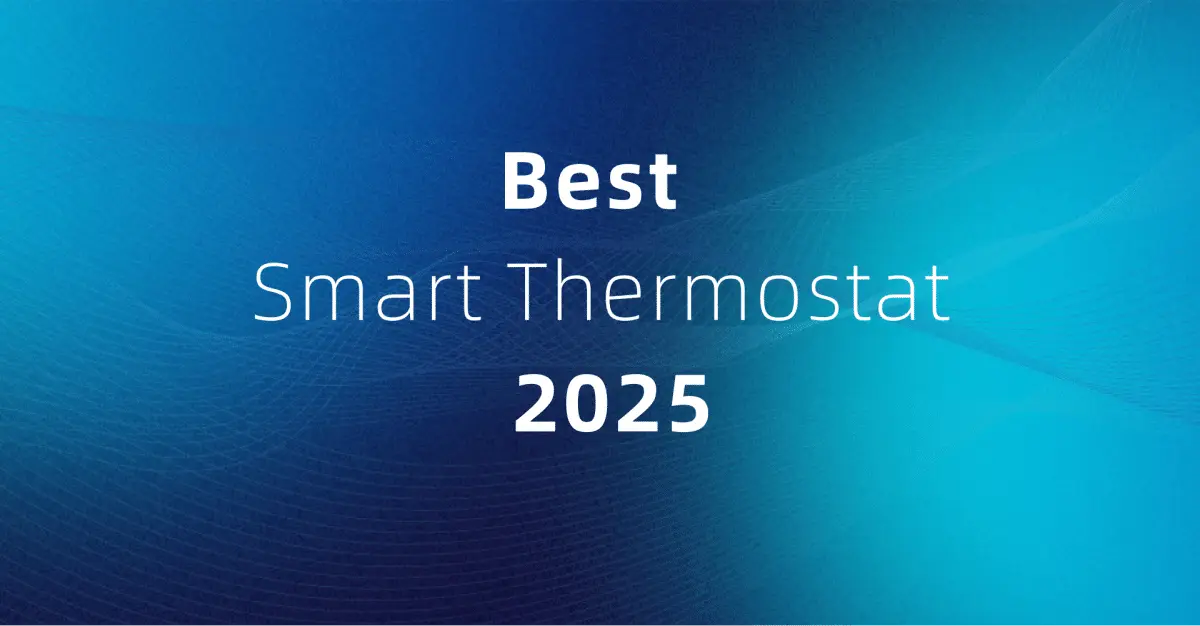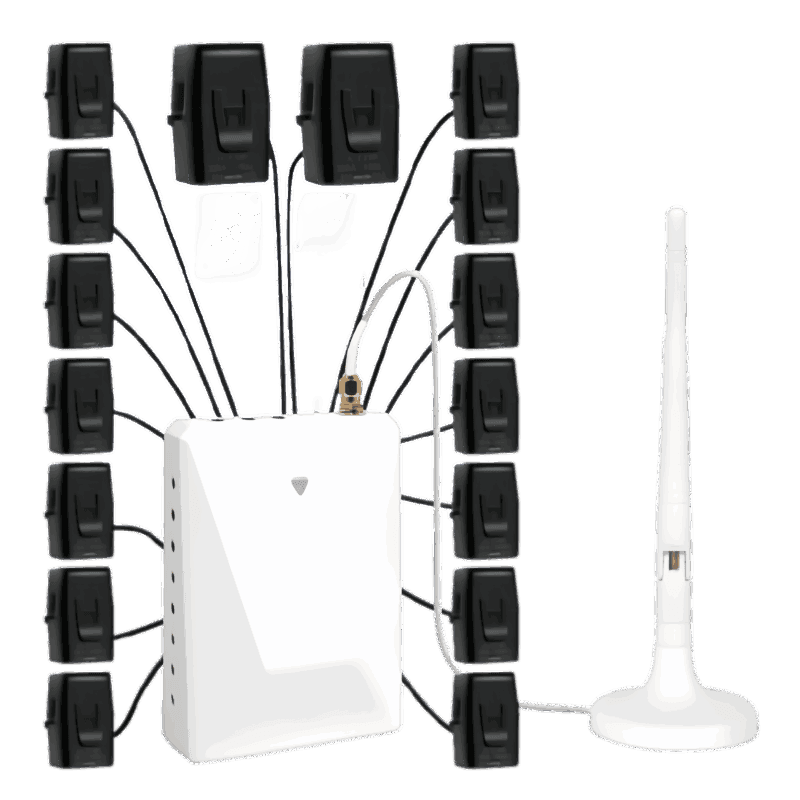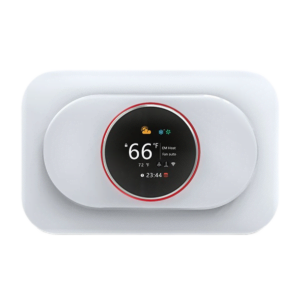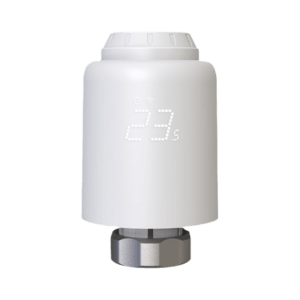1. 2025 年にスマート サーモスタットが最高になる理由は何ですか?
まずは答えてみましょう:「2025 年のベスト スマート サーモスタット」とはどういう意味ですか?
「最高」と評価されるには、スマート サーモスタットは次の分野で優れている必要があります。
| 条件 | 説明 |
|---|---|
| AIを活用した学習 | あなたの習慣を学習し、温度を自動的に調整します。 |
| Wi-Fiとアプリ制御 | スマートフォン、タブレット、スマートホーム システムを介したリモート アクセス。 |
| エネルギー使用分析 | HVAC の使用状況を追跡し、最適化を提案し、節約額を見積もります。 |
| 互換性と統合 | SmartThings、Alexa、Google Home、ソーラー システムなどと連携します。 |
| 複数のシステムのサポート | ヒートポンプ、ベースボード暖房、輻射床、マルチゾーンと互換性があります。 |
2025年には、サーモスタットはよりスマートになるだけでなく、これまで以上に賢くエッジベースの処理、予測分析、より深いスマートホーム統合.
2. 2025年のトップスマートサーモスタットランキング
According to recent industry research and consumer rankings (e.g., from TechRadar, Wirecutter, and CNET), the2025年のトップランクのスマートサーモスタット含む:
| ランク | モデル | 最適な用途 | 主な特徴 |
|---|---|---|---|
| 1 | Grus EcoNet-TU | ヒートポンプ住宅 | 太陽光を考慮した制御、高度なスケジューリング、AI最適化 |
| 2 | Nest 学習サーモスタット | 一般的なスマートホーム統合 | 学習行動、シームレスな Google エコシステム |
| 3 | Ecobeeスマートサーモスタット | 音声制御 + センサー | Alexa内蔵、マルチルームセンサー |
| 4 | Grus EcoNet-BH | ベースボード電気暖房 | 高電圧制御、ジオフェンシング、モバイル制御 |
| 5 | ハネウェル T9 | ゾーン暖房/冷房 | 室内センサー、スマートホームとの互換性 |
🔍Grus EcoNetシリーズが目立つfor offering models tailored to specific HVAC types (e.g., baseboard or heat pump) and supporting solar + battery-aware automation—something mainstream brands still lack.
3. 2025 年、あなたにとって最適な WiFi サーモスタットは何ですか?
選択する2025年のベストWiFiサーモスタットいくつかの要因によって異なります。
- あなたの暖房/冷房システムの種類(セントラル、放射、ヒートポンプなど)
- あなたが望むならエネルギー使用レポートおよび二酸化炭素排出量の追跡
- との統合太陽光発電orスマートメーター
- ゾーン別 vs. 家全体温度制御
- あなたが価値を置くかどうかデバイス上の音声制御、またはアプリ+自動化のみを希望
💡 ユースケース:太陽光発電+バッテリー住宅
蓄電池付きの太陽光発電システムをお持ちの場合は、Grus EcoNet-TUis a game-changer. It adapts HVAC operation to real-time solar production, increasing self-consumption and reducing grid reliance.
4. 機能比較:トップクラスのスマートサーモスタット
To help you make the best choice, here’s a detailed comparison of the leading smart thermostats in 2025:
| モデル | HVACの互換性 | スマートホーム統合 | AI学習 | ソーラー/バッテリーサポート | 音声コントロール |
|---|---|---|---|---|---|
| Grus EcoNet-TU | ヒートポンプ、セントラルエアコン | スマートシングス、アレクサ、グーグル | ✅ | ✅ (リアルタイム最適化) | ❌ |
| Grus EcoNet-BH | 電気式ベースボードヒーター | スマートシングス、アレクサ | ✅ | ❌ | ❌ |
| ネストラーニング | ほとんどの中央HVACシステム | Google Home、Alexa | ✅ | ❌ | ✅ (Google アシスタント) |
| Ecobeeスマートサーモスタット | ゾーン + 中央 | Apple HomeKit、Alexa、SmartThings | ✅ | ❌ | ✅ (Alexa内蔵) |
| ハネウェル T9 | 中央システム | Alexa、SmartThings、Google | ⚠️限定 | ❌ | ✅ |
✅ハイライト:のみGrus EcoNet-TU太陽光発電 + バッテリー対応 HVAC 制御のネイティブ サポートが含まれています。
5. 太陽光発電+グリッド+バッテリーの家庭向けスマートサーモスタット
スマートサーモスタットがどのように動作するかを視覚化してみましょう。Grus EcoNet-TU現代のエネルギーエコシステムに適合します。
エネルギーに配慮したスマートホームのスマートサーモスタット
graph TD; A[Power Grid] --> E[Main Panel] B[Solar Inverter] --> E C[Battery Storage] --> E E --> F["HVAC System"] F --> G["Grus EcoNet-TU Smart Thermostat"] G --> H["Grus App: Usage & Optimization Insights"] G --> I["SmartThings Home Automations"]
- 🏠 Grus EcoNet-TU は、Grus WattPanel スマート メーターを介してシステムの電力フローをリアルタイムで読み取ります。
- 🔋 太陽光発電とバッテリーの可用性に合わせて HVAC の使用を調整します。
- 📱 エネルギーレポートと快適性に関する洞察を携帯電話に直接送信します。
6. 実例: 冬の暖房の最適化
シナリオ:
シカゴのユーザーがインストールGrus EcoNet-BHスマートなベースボード サーモスタットを導入し、冬の暖房コストを削減したいと考えています。
前に:
- 手動温度設定
- ピーク時の光熱費が高い
後:
- 午前10時から午後3時まで誰も家にいない場合、サーモスタットが自動的に温度を下げます
- ジオフェンシングを利用して住民が戻る前に気温を上げる
- 最初の1ヶ月で推定25%のエネルギー節約
📉月間の電力使用量は1200kWhから900kWhに減少しました。
7. 2025年に本当に重要なスマート機能
| 特徴 | なぜそれが重要なのか |
|---|---|
| 予測スケジューリング | 手動入力と HVAC の過剰使用を削減 |
| ジオフェンシング自動化 | 誰も家にいないときに無駄を省く |
| 湿度と空気の質 | 変わりやすい気候でも快適さを調節します |
| 無線アップデート | 将来の改善へのアクセスを確保 |
| 公益事業の需要応答 | グリッド最適化プログラムに参加する(サポートされている場合) |
✅ Tip: Always check whether your utility provider supports smart thermostat rebates or load response programs. Many offer 50–150 in annual incentives.
8. スマート サーモスタットのインストール方法 (DIY またはプロによるインストール)
スマートサーモスタットの設置は通常簡単ですが、サーモスタットをHVAC配線に合わせる.
DIY インストールの基本手順:
- 電源を切るHVAC システムに。
- 古いサーモスタットを取り外すワイヤーにラベルを付けます。
- Cワイヤーを確認する(共通ワイヤ) — 多くのスマート サーモスタットに必要です。
- 新しいデバイスをマウントするそして配線を接続します。
- 電源を入れて設定するモバイルアプリを使用します。
📌先端:システムが高電圧の場合(240Vベースボードヒーターなど)、Grus EcoNet-BHのようなサーモスタットのみを使用してくださいそのために特別に設計されています。
9. 最終的な推奨事項: あなたに最適なスマート サーモスタットはどれですか?
| 使用事例 | 最良の選択肢 | Why |
|---|---|---|
| 太陽光 + バッテリー + ヒートポンプ | Grus EcoNet-TU | 太陽光発電と蓄電に基づいて HVAC の実行時間を最適化します |
| ベースボード電気暖房 | Grus EcoNet-BH | 高電圧システム、エネルギー効率の高いスケジュールをサポート |
| マルチルーム、音声制御ホーム | Ecobeeスマートサーモスタット | 室内センサーとAlexa搭載 |
| シンプルさと信頼性 | Nest 学習サーモスタット | Google Homeユーザーに最適、強力な学習アルゴリズム |
| ゾーンエアコンまたはセントラルエアコン、お手頃価格 | ハネウェル T9 | 室内センサーと幅広い互換性を備えた堅牢な機能 |
🎯 ブランドに関係なく、鍵となるのは、HVACシステムとライフスタイルの調和です.
🏡結論:スマートホームはスマートサーモスタットから始まる
スマートサーモスタットはスマートエネルギーシステムのコントロールセンター. Whether you're trying to reduce your bills, automate your routines, or prepare your home for solar + battery upgrades, a smart thermostat is a small upgrade with a big return.
💡 次のようなモデルではGrus EcoNet-TUandGrus EcoNet-BH、 あなたはできる:
- 快適さを正確にコントロール
- 毎日エネルギーを節約
- SmartThings、太陽光発電、リアルタイム監視とシームレスに統合
✅あなたの家をもっとスマートにする準備はできていますか?
Learn how baseboard, heat pump, and HVAC smart thermostats work — plus setup tips and energy-saving strategies.
Read the Smart Thermostat Heating Guide →スマートサーモスタットの意思決定フロー
graph TD; A["What HVAC system do you have?"] --> B["Heat Pump or Central Air"] A --> C["Baseboard (240V)"] B --> D["Grus EcoNet-TU"] C --> E["Grus EcoNet-BH"] B --> F["Nest / Ecobee / Honeywell (if solar not needed)"]




